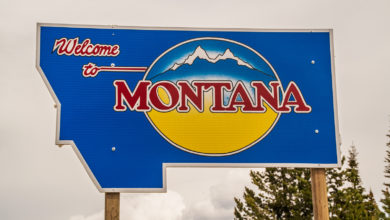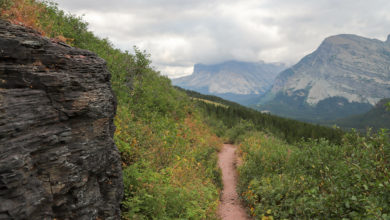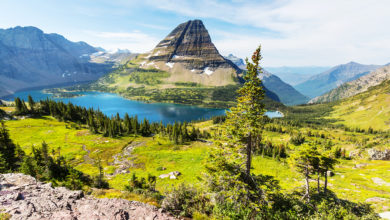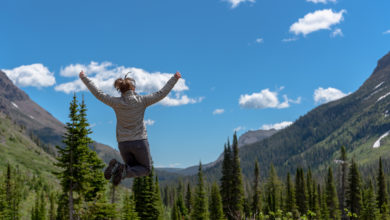Montana Is Big, Wild, and Original
Here are 6 things about Big Sky Country that make it extraordinary
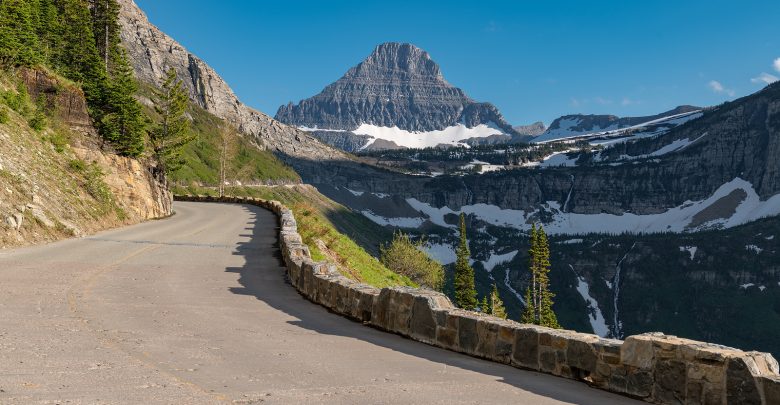
On November 8, 1889, Montana became the 41st state to join the union. It’s the fourth largest state in the country in terms of area behind Alaska, Texas, and California. It’s home to over one million Americans who endearingly refer to their beloved state as “Big Sky Country.”
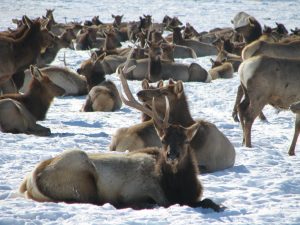
Montana has the largest elk herd in the nation, and there are more cows in the state than people. In fact, bovines outnumber humans nearly 3 to 1. But running the risk of being overtaken by cattle isn’t the only thing that’s pretty unique to Montana. Don’t believe us? Here are six more things that make Montana stand out in our minds apart from the other 49 states.
Montanans speak a different language. Kind of.
You know that fellow Americans living in different states have a way of talking that can often sound very different from the mainstream English spoken in general in our country. (Ya know, those Texans and their drawl—and the way they add extra syllables to simple words!) But it’s a little different in Montana. It’s not the way they talk; instead, it’s more about how they take some of our mainstream words and give them alternative, Montana-specific meanings.
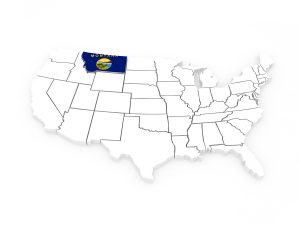
For instance, the word burger in most states means a sandwich featuring a beef patty. But in Montana, burger denotes a sandwich with a meat patty from a large mammal—often elk or bison. Pickle barrel to the rest of us usually means a large container of pickled cucumbers, but in Montana, pickle barrel means a Montana restaurant chain that serves up some of the best sandwiches around. The winner of a contest is often called a champ, but in Montana, that word is the name of the adorable Montana State University mascot. And sports refers to organized games that involve competition, such as football, baseball, and basketball. But in Montana, sports means organized competitive games like ax throwing and ice climbing. Ok, so it’s not a different language, but the improvised meanings are pretty interesting!
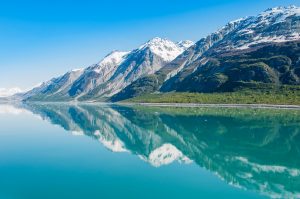
The “Crown of the Continent”
One of Montana’s most amazing claims to fame is Glacier National Park, which is sometimes referred to as the “crown of the continent” because of its pristine ecosystem. Glacier National Park was established on May 11, 1910 and has 25 active glaciers, over 700 miles of trails and one of the most scenic drives in the country—Going To the Sun Road. The park encompasses more than 1 million acres of wilderness. It’s one of the most Instagrammed places in the country and one of the most pinned locations on earth on Pinterest.
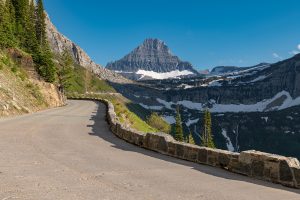
One of the park’s peaks—Triple Divide Peak—supplies water to three different oceans. The Continental Divide and the Northern Divide—both of which direct water flow to the oceans—meet at the summit of Triple Divide Peak. Because of this, water flows from the peak to the Pacific Ocean, to the Atlantic Ocean (by way of the Gulf of Mexico) and to the Arctic Ocean (by way of Hudson Bay).
Annual snowfall at Glacier National Park averages about 138 inches. But the park has also endured a myriad of wildfires. The combination has given way to the “fire and ice” reference to the park. In 1936 alone, there were some 64 wildfires, and a severe burn season in 2003 threatened many parts of the park.
For information on this fabulous national park, visit www.nps.gov/glac.

You can become a felon by doing some really harmless things.
Whether you’re a resident of, or visitor to, the state of Montana, you’ll want to be on your best behavior—or at least mindful of your behaviors—since doing a few harmless things, as well as a few really weird things, can land you in jail, or at least leave you with a fine. That is, if law enforcement even knows about these laws.
In Montana, it’s illegal to have a sheep in the cab of your truck without a chaperone. Why? We aren’t sure. It’s also illegal for a married woman to go fishing alone on Sundays. (It’s illegal for an unmarried woman to go fishing alone on any day!) If you feel the urge welling up inside of you to throw objects across public roads in the city of Helena, Montana, quench it quickly—it’s illegal. Wives, resist the temptation to open your husband’s mail in Big Sky Country because—you guessed it—it’s against the law. You’ll also want to wait until the dark of night if you plan to lead sheep onto a railroad track with the intention of injuring the train. Otherwise, you have a choice—five years in jail or $50,000. And for goodness sakes, if you must have 10 or 12 alarm clocks at your house, just make sure they aren’t all ringing at the same time. That kind of tomfoolery is strictly forbidden in Montana.
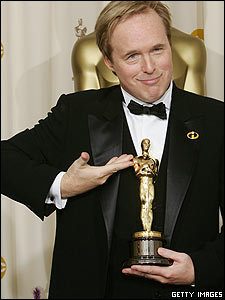
If it weren’t for Montana, we might never have met PIXAR’s Incredibles family.
What would this world be like if Disney and PIXAR had never dreamed up the storyline for the characters in the 2004 blockbuster, The Incredibles? We’d never know Mr. and Mrs. Incredible and their superhero children. Well, thanks to Montana, we don’t have to live in that world. That’s because Montana is the birthplace of PIXAR animator, director, and screenwriter Brad Bird. Bird was largely responsible for the success behind Disney/PIXAR’s The Incredibles, The Incredibles 2 and Ratatouille.
Bird isn’t the only famous name you’ll hear associated with a birth in Montana—he’s in good company. Actors Gary Cooper, Patrick Duffy, and Dana Carvey were all born in Montana, as was actress Michelle Williams, daredevil Evel Knievel and the first woman to ever be elected to Congress, Jeannette Rankin. The notorious Unabomber—who made it his twisted business to construct and deliver bombs to people between 1978 and 1996—was also born in Montana. Too bad Mr. Incredible hadn’t quite been created at that time. He could have had Ted Kaczynski captured instantly, we just know it.
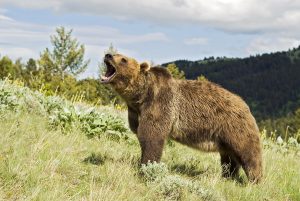
More bears than they know what to do with
Well, maybe not that many, but Montana does boast the largest population of grizzly bears in the lower 48 states. Grizzlies are found mainly in Alaska, Wyoming, Montana, and Washington. They are so named because of the “grizzled” look of the long, white-tipped hair on their backs and shoulders. The grizzly bear can stand six to eight feet tall when on his hind legs and weighs between 300 and 800 pounds. And though they’re big animals, they can also be remarkably agile—running up to 35 miles per hour! There are roughly 800 grizzlies in Montana, most of which live in or near Glacier National Park, in Yellowstone National Park or in other wilderness areas nearby.
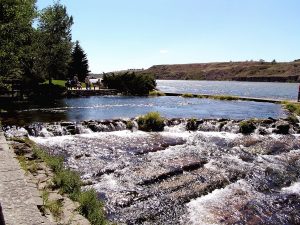
Roe, Roe, Roe your boat . . .
. . . but not too far. That’s because the Roe River, which runs from Giant Springs to the Missouri River near Great Falls, Montana, is the shortest river in the world, which means you might run out of river if you “roe” too far. At its longest constant point, the river is only 201 feet long, and toward the mouth of the river, the water runs about 6 to 8 feet deep. The Roe was named the World’s Shortest River by the Guinness Book of World Records in 1989, and while that might not be the most impressive thing you’ve read today, the story behind that honor is certainly one of interest.
In 1987, a group of fifth graders in Ms. Susie Nardlinger’s class at Lincoln Elementary School in Great Falls, Montana, decided that they wanted to name the tiny unnamed river near their school. In order to do so officially, the group of youngsters had to petition the United States Board of Geographic Names. Their petition was granted, and the tiny line of water was officially named the Roe River. The class—with the help of their teacher—then sent their proposal to Guinness so that their little river might be considered a world record holder. Their determination led to the Roe being officially named the shortest river in the world in 1989, only to be contested by another group representing a different river. How did Guinness respond? All we can say is that the category of “World’s Shortest River” was done away with in the next edition of the annual record book.

